
In most ancient civilizations, men were the ones who engaged in bloody war business ... but not always. Throughout history there have been many powerful women who have guided the nations and guided the armies in the war, known not only as frightening fighters but also as cunning and inspirational leaders. From Teuta of Illyria to Nefertiti, the lovely queen of the Nile.
Trung sisters, freedom fighters

Throughout history, Vietnamese women have been essential in resisting foreign invasions. The most prominent Vietnamese heroines were Sisters Trung, who led the first national uprising against their Chinese invaders in 40 AD after the birth of Christ. Trac and Nhi Trung were born sometime around 12 AD. Kura was born all Vietnam was under the control of the Chinese Han Dynasty. Sisters studied the art of war, and were well prepared in martial arts. In 39, they began the revolution in opposition to the oppressive rule of the Han Dynasty. They gathered the supporters - many of whom were women - to fight against the Chinese. For more than three years, the Chinese fought to regain control of Vietnam, but the forces of Trung sisters fought to keep control until 43 AD,
Boudicca, the Celtic queen who fought against the Romans

"Now I will fight for my lost freedom." These are the words of Queen Boudicca, according to ancient Tacitus historian, as she called her people to go to war with conquering Romans in Britain.
Boudicca was the queen of the Icene tribe, a Celtic tribe who had joined a number of British tribes in revolt against the invading forces of the Roman Empire in the 60-61 AD. As she succeeded in defeating the Romans in three major battles, their victories did not last. The Romans gathered and finally executed thousands of people in the Icene tribe and took the rest as slaves. The name Boudicca has resisted history as the brave war queen who fought for freedom from oppression, for herself, and all the Celtic tribes of Britain
Teuta, the unrepentant queen of the Illyrians
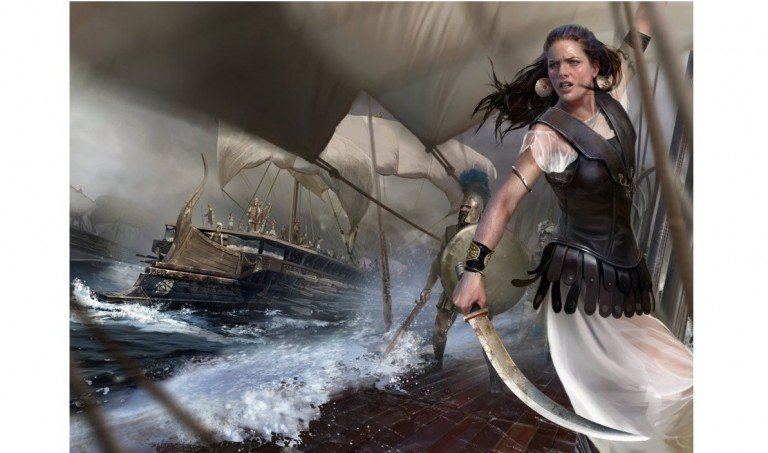
After the defeat of Cartagena, in 241 BC, the Republic of Rome became a dominant naval power in the Mediterranean. However, the control of the seas from Rome was not absolute. In the east of Italy, another power was on the rise. This was the Ardian kingdom, led by an Illyrian tribe that began to threaten the trading routes of Rome, which crossed the middle of the Adriatic. At the head of this kingdom was Queen Ladies, Teuta.
Teuta was Agron's wife, a king in the Ardian kingdom. It was under Agron's leadership that the Kingdom of the Ardians became a force to consider.
In 231 BC, Agron died suddenly, after a victory over the Etolianians. As Agron's heir, Pini was simply a child when the king died, so the Ardian kingdom was led by Teuta, who acted as a queen until the young king was in his right age.
Though Teuta continued with the expansionist policy of her late husband, her actions were described in a negative light by Polibi. Though, this may have been a biased view, given its focus on Roman historiography.
According to Polibit, Teuta that Teuta supported Illyrian practice of piracy, and robbed indiscriminately its neighbors, as the commanders were instructed to treat them all as enemies.
These were the piracy attacks that would later push Rome to proclaim war on Teuta. After some battles, realizing that he could not resist the Romans, Teuta surrendered in 227 BC. According to Polib, Teuta "agreed to pay a tribute they decided to renounce all over Illyria apart from some countries, and promised not to sail across Lezha with more than two unarmed ships."
Though Teuta lived for two decades, there is an interesting story that says Teuta was thrown from a rock instead of surrendering to the Romans in Kotor Bay, where today is Montenegro. Since Risan is the only coastal city of Montenegro without a naval tradition, it is said that it happened because of the illusion of the Illyrian queen against the city before committing suicide.
Grace O Malley, Ireland's 16th-century pirate queen (My favourite)
Grace O Malley was the King of Umaill, leader of her tribe. She was known as a rebel, mariner and fearless leader, who challenged the troubled 16th century politics between England and Ireland. He was born in Ireland in 1530, and was the daughter of a wealthy nobleman. After the death of her father, she inherited her ships and money. With the invasion of Ireland by Tudori, many Irish lands were conquered by him. But O'Malley was one of the few maritime families who built their castles along the coastline to protect the territory. After many successful English-style battles, the pirate captain was caught, but managed to escape a death sentence. During a historic meeting with Queen Elizabeth I, she managed to persuade her to release her family.
Cartimandua, queen of Brigantes tribe, friend with Rome
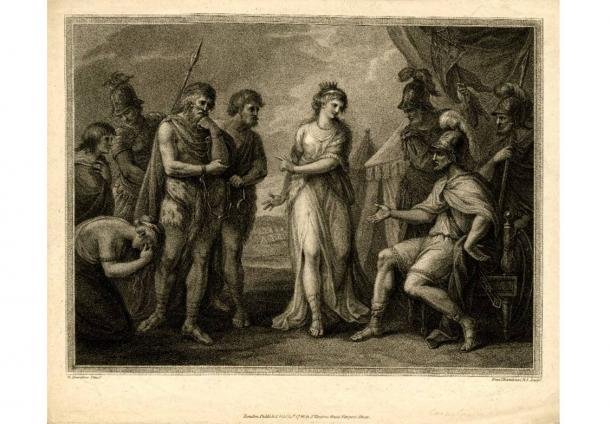
Cartimandua was the Queen of the Brigantes tribe, occupying the region today known as the northern part of England. It is said to have been the largest tribe in the British Isles. When the Romans with Emperor Claudius invaded Britain in 43, the Brigant tribes became a kingdom of Rome, whose loyalty to the empire made them secure autonomy. In 57, a fight between Cartimandua and her husband Venutius caused civil war to explode. The Romans decide to intervene by helping with the Cartimanduan military force, and so she managed to secure the throne. But after the death of the Roman Emperor, Roma did not help Cartimandua lost her throne in wars with her husband. However she managed to stay in the Roman fort in Deva.
The life and dramatic death of Penthelia, the Queen of Amazon
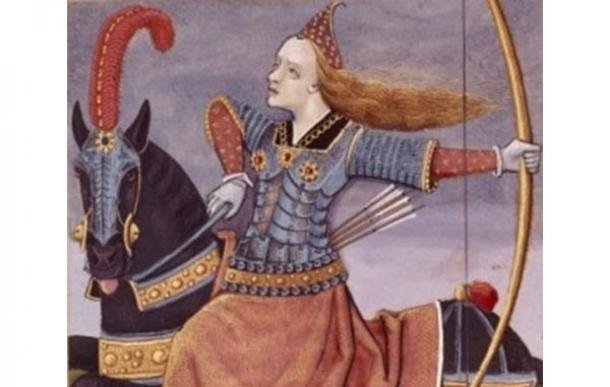
Penthesilea was the Queen of Amazon, a legendary female warrior race.
The Amazon women were so devoted to being a warrior, so that they removed one of their breasts to be more loose in using the arcs in the war. As he went out for hunting one day, Penthesilea wrongly killed her sister with a spear. This greatly disturbed Penthesilean that he wanted to die. But as of the Amazon that was, she should die honorably during the war. Pentecostal rule as queen was during the Troy War period. When Achilles killed Hector's crown prince, Penthesilea decided to go to war even though he did not want to remove his sister's grief. It is said that she attacked the Greeks as a real dart. He wanted to kill Achilles to get Hector's revenge. But even though Penthesilea was a wild fighter, her life ended in Achilles' hands.
Ching Shih, from prostitute to a pirate lord
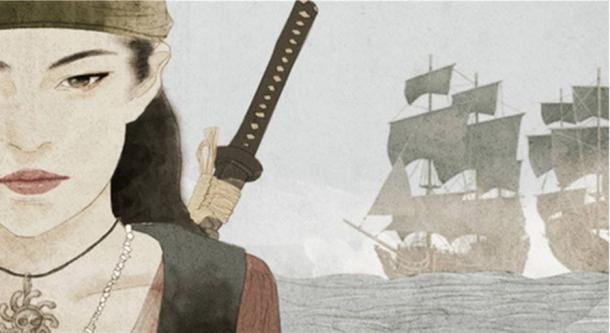
Ching Shih was born in Guangdong, China, in 1775. She became a prostitute working in various brothels. The pirate Zheng Yi, who commanded a group of ships, noticed the beauty of Ching Shih and took her as a woman. With the pair at the top, the "Red Flagship Fleet" of 200 ships reached 1700. Zheng Yi died in 1807, only after 6 years of marriage. Ching See took the throne and was known as a strict and disciplined pirate. She focused more on military strategies and business. She also created several laws that defended her pirates. The female slaves who were considered ugly were left free and unharmed. If a pirate wanted to take a beautiful slave for a wife, that was permissible. At the end of her career as a pirate, Ching Shih returned to Canton and opened a gambling house where she stayed until the end of her life.
Zenobia, the fighting queen of Palmyra in Syria
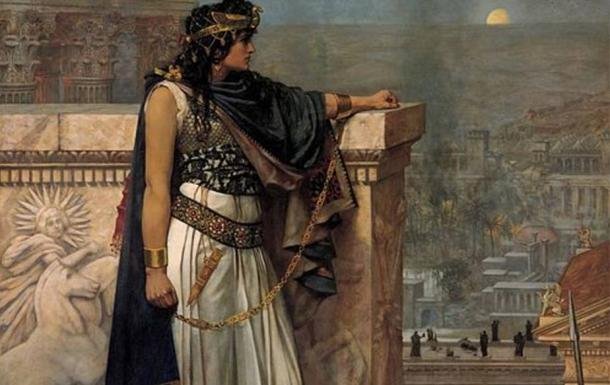
Zenobia was a queen in Palmyra, born about 240 AD, at the time her country was a Roman province. She married at the age of 18 with Septimius Odaenathus, an influential member of the Palmirian society. However, only nine years later, her husband was killed. The son of Zenobias, Vaballathus, became king of Palmyra, while Zenobia was a sergeant. As Roma was gripped by the third-century crisis, this was a perfect opportunity for Zenobian to expand Palmyra's rule. In 269, with the help of Egyptian allies, the Palmirians were able to defeat the Roman prefect of Egypt. To increase her reputation, Zenoiba said she was the successor to Cleopatra. Zenobia then with the army marched to Anatolia to conquer the Roman territories there. In the end was the Galician Empire that defeated the Palmaris and captured Zenobian, whose last destiny is unknown.
British lioness and her pirates

In the midst of the 100-year War between England and France, a frenetic French woman named Jeanne de Clisson entered the sea with her navy fleet, where she could unkind King Philip VI's ships to avenge her husband's death hers.
For her cruelty she got the name "The Lioness of Britain". Jeanne and her crew smashed all the king's ships, leaving one or two sailors alive to return the message to King that Luanesha had hit again. In her efforts to keep the English Channel completely free from French ships, she tied up an alliance with the Englishmen by sending supplies to soldiers for battles. Jeanee fought as a pirate for 30 years. When her revenge was over, Jenna married an English nobleman, Valter Brentley.
Nefertiti, the queen of the Nile

Two of the most prominent figures in history are beautiful Nefertiti and her husband, the pharaoh heretic Akhenaten. He gave up the old Gods and built a new capital, a place that could be worshiped in a new way, known as Tell-el-Amama, between Luxor and the Delta. According to Akhenaten, the Almighty God was no longer Amun, but the power of life was the Sun. In El-Amarna, the king and Nefertitus cleansed this place from old souls and filled it with a new spirit of life. Perhaps this was one of the first monotheistic experiments in history.
During the 12-year period of reign, Nefertiti had great powers, so much Pharaoh.
Nefertiti is considered a symbol of rare feminine beauty
A few years later, the king and queen died, the old order was restored, and the city of religious dreams was abandoned forever.
A century ago, on December 6, 1912, German archaeologist Ludwig Borchardt found a bust in the studio of sculptor Thutmose. Very soon he realized that it was actually a portrait of Queen Nefertiti. Since 2009, Nefertiti was given a special room in the northern part of Neues Museum in Berlin. The bust is secured in the value of 400 million euros ($ 523 million).
Borchardt wrote that it is impossible to describe the beauty of this sculpture. With a length of about 50 cm, the bust is made of limestone, covered with plaster. Iris of the left eye is not lost. The beauty of Nefertit, whose name means "the beautiful has arrived", is right for the status that she kept alongside her husband, Akhenaten.
Thanks for your work as well! Followed @imtheuniverse
Congratulations @imtheuniverse! You received a personal award!
You can view your badges on your Steem Board and compare to others on the Steem Ranking
Vote for @Steemitboard as a witness to get one more award and increased upvotes!